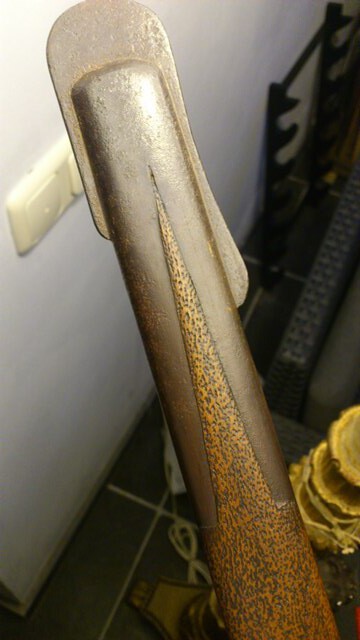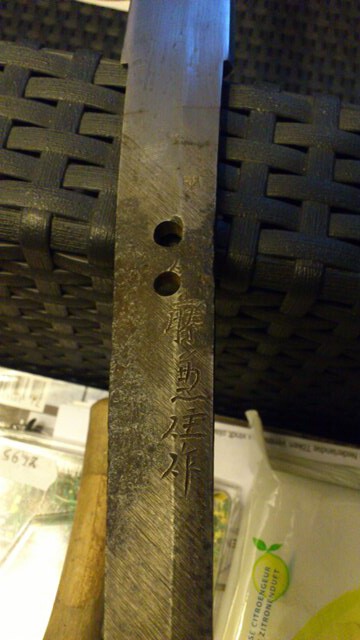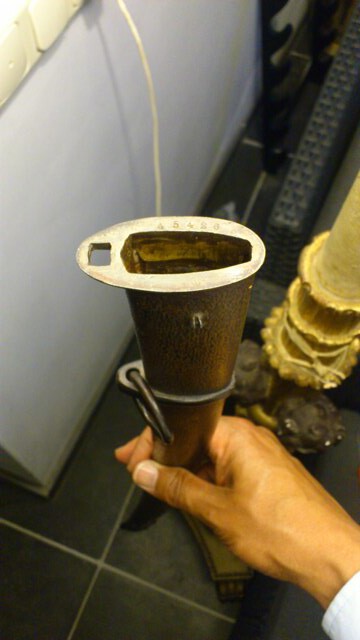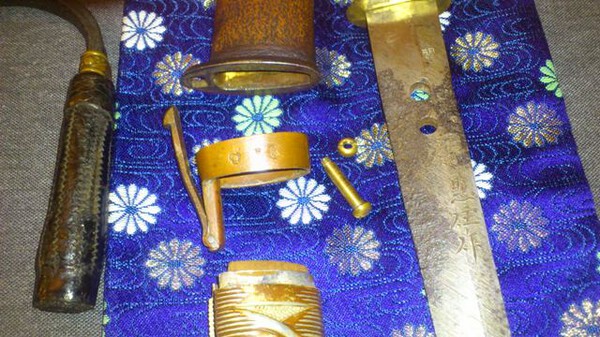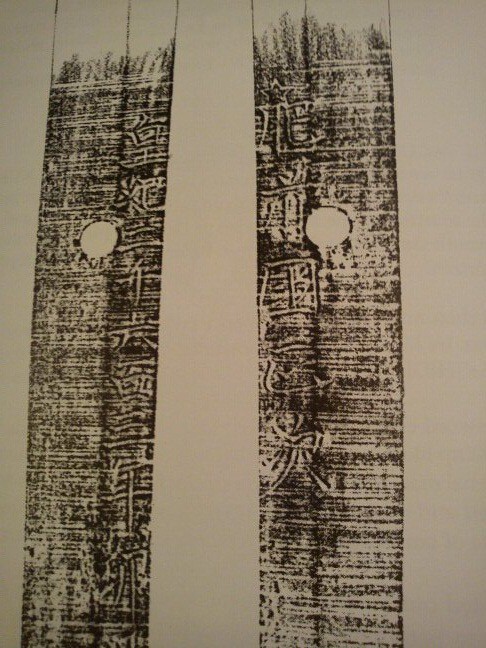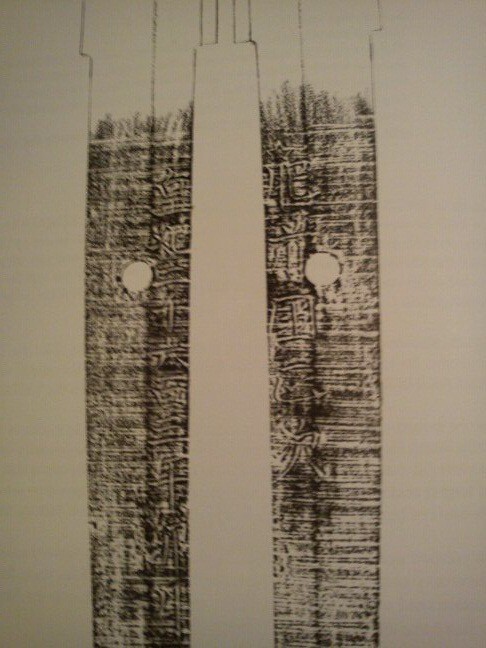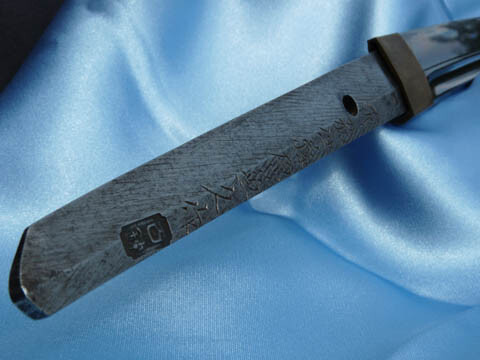-
Posts
22 -
Joined
-
Last visited
Profile Information
-
Location:
Venlo-The Netherlands
nsealrob's Achievements
-

Poll:- New collectors and ages of Nihonto enthusiasts
nsealrob replied to Brian's topic in General Nihonto Related Discussion
Hey Alex, I believe we both come from that good year 1972 :D If you live in Holland, we should meet ones?! And relive that moment when it all started hahaha.... Grz, Rob -

Poll:- New collectors and ages of Nihonto enthusiasts
nsealrob replied to Brian's topic in General Nihonto Related Discussion
Hallo Barry, Unfortunately i have never meet Mister Han Bing Siong! I believe he just pass away 1 or 2 years earlier... As far as i know from all the story's and all the writings...he was a great lost! But still...he lives on in our harts end memory... Best regards Rob -

Poll:- New collectors and ages of Nihonto enthusiasts
nsealrob replied to Brian's topic in General Nihonto Related Discussion
Hallo there, I first started to create interest for samurai and there swords at the age of 8 or 10 years old. It was then..on the couch next to my mother with a lemonade and some chips that i was permitted to watch James Clavell's mini serie, "Shogun" (Back than i didn't know who he was or what shogun meant!!) Mennn i was so fascinated by those funny looking man with there spears and swords i couldn't sleep that night!! Next day i went to an uncle of which i knew he had some kind of a collection conserning swords and knives....and there it was...that i for the first time got glamourd by a real samurai sword (some early copy of...???) But than i was just too young to keep a weapon like that but i have never forgotten the color of that bright shining metal in which i could see myself staring!! Years past by and so did the ninja's, samurai and drunken kung-fu masters....But still...i was possesed by one thing...that sword who ones belonged to a real samurai!! So i went to our local library and guess what....only one book about Budo mentioned the Japanese sword...briefly (Don't forget, internet was not jet within my reach!!) What could i do!? Living in a small town somewhere in the south of The Netherlands....I started to practise Shotokan Karate, than Pencak Silat, Teakwondo...nunchaku-do and finaly Yugen Budo Kobudo....in which i was introduced to iaido and Katori Shinto Ryu!! All together it took me 20 years of my life to finaly understand what Samurai and there Katana realy where.... and there i started to collect Japanese swords...first a boken...than an iaito there came my first Shinken.... but still no Nihonto!!! It would take an other 4 years... to get my hand on a "real" Nihonto (It wasn't....it was a non traditional forged shingunto) anyway in my believe to own a real Nihonto i finaly started to read books about nihonto (all my spare money went to satcho .com) After reading several years and practicing even more years with the Japanese sword i had the feeling i knew quite a bit about Nihonto..! And there i found myself sitting day's and nights behinde my desk and computer....building my own internetsite dedicated to Japan, the Samurai and the Japanese sword... in the Dutch language because i good not understand why there were no books about this subject in my own language!! I wanted to share my passion and knowledge with other people in Holland! Of course it didn't took long people started questioning....and it took even less time to discover i didn't know that much i thoughed i knew! And here i started to get seriously!! At the age of 36 i joined The Dutch To-ken Society and now 5 years later.....I finaly start to understand what Nihonto is and still i have the feeling i don't know enough to fully participate with all the people here Hahaha.. Best regards Rob Kauffman (nsealrob) -
Dear Hamfish, There are stil 3 day's to go....and if someone is interested, it can go up until the last minute/second! Why didn't you place a reserve price?! nsealrob
-
Hi Ken, I have seen several blades with more than 3 mekugi-ana...they where all shortened tachi... in this case there is little curvation (sori) and the nakago is not ubu....so i wonder if this blade could be a shortened early kamakura or late kamakura blade?? nsealrob
-

Has anyone seen this kind of saya on a type95 gunto before??
nsealrob replied to nsealrob's topic in Military Swords of Japan
Dear George, This seems correct as far as i could find...?! About your thinking...that the saya ones be housed in a leather combat cover could be possible.... I know there where complainings from the soldiers because of the weight of there gunto....and wood has been used to solve this problem.... But if i had to solve that problem i wouldn't make such a nice wooden saya hahaha.... nsealrob -

Has anyone seen this kind of saya on a type95 gunto before??
nsealrob replied to nsealrob's topic in Military Swords of Japan
Dear Gunto, That would be very interesting if i could proof this saya is Original?! At the other hand....the kisaki has a strainge geometry so this blade was not shortened at the nakago but altered at the kisaki to fit this saya (And i think, it's done by a non-Japanese!?!) The number on the koiguchi is 45486.....i can not remember a number this low and if....would the tsuka be brass instead of aluminium?? nsealrob -

Has anyone seen this kind of saya on a type95 gunto before??
nsealrob replied to nsealrob's topic in Military Swords of Japan
Hi there, i have added 2 other pictures i hope they are helpful.... As SwordGuyJoe and Stu W allready mentioned my personal feeling is the same... i think these pieces are fitted together.... Unfortunately i have no reverences for the number on the koiguchi at the other hand i can't remamber a number this low?! But still....could this saya be original ?? That is what interest me. (Couldn't find a european example of sabre with this kind of scabberd) In this case i would rather have the Original machine made blade, to proof numbers instead of a possible Hantanren made seki blade!!! I hope someone comes out with some information consurning the saya.... Thank you all for your reply on my question consurning this strainge configuration. -
Dear sword fellows, Someone would like to trade this sword with me. But i have never seen a configuration like this one (Saya) My first impression was; ohh dear...another example of a chinees fake!! Why, The leather tassel looks different. The saya is made of wood with a strange drag The stamps on the fuchi are a little faint And the tsuba....i just don't know hahaha... At the other hand..... this type 95 gunto koshirae....holds an seki blade from, i believe, Sato Kanesumi I will try to post some pictures here...... If there is someone out there who can give me more information on this sword.....i will be very thankfull!
-

Japan Earthquake
nsealrob replied to nagamaki - Franco's topic in General Nihonto Related Discussion
All my heart goes to all those people who are effected by the earthquake. I will pray for good luck and a helping hand to everyone who needs one now.. or later on!!! -
Hallo George, Thank you for your reply. Your comment gives me some more insight on this issue. The article i quoted was published 7 years ago..... many thinks did hapen and many thinks changed. As Chris already mentioned "We do know better now" Besites a statement... this was for me also a question..... And so, i learn some more every day, here on this board. Thank's Rob Kauffman
-
Hallo Toryu, My guess will be; 駐爪 - 駐爪ボタン Chūha - Chūha-button See following link; http://www.h4.dion.ne.jp/~t-ohmura/gunto_011.htm Gr, Rob Kauffman
-
Unfortunaly i don't own a scanner... so i had to photograph the oshigata, then upload them to facebook... download them to my computer and tadahhh here they are hahahaha Rob Kauffman
-
Dear NMB-ers, To give this topic some new material for discussion.... I have found an artikel written by former chairman of the Dutch To-ken Society; Mr. Han Bing Siong. It's mentioning a star stamped blade with the signature of; Hizen Kuni Masatsugu Koki Nisen Roppiaku San Nen Uzuki Kichi Jitsu (On the Mune) Kogi Lenght 66,1 cm Shinogi Zukuri, ihorimune, mihaba hiroku, torii sori, chu kissaki nobiru. Tighly forged ko-itame hada, wazukuni nagare, on omote some o-hada, ji nie, chikei, shirake, which becomes a vague bo-utsuri along a large part of the hamon. The hamon is Sugu ko midare ko choji ha, ko ashi, some kinsuji, nioiguchi shizumu. This blade was send to Japan for Shinsa and passed examination!! I quote; This smith is Taguchi Kiichi, born in 1904 and a pupil of KURIHARA AKIHIDE. As from 1935 he worked in Karatsu in Saga-district of the former province of Hizen. He passed the army's examination for RUKIGUN JUMEI TOSHO in 1941 and was awarded a gold medal and the Minister of the Navy prize in 1939 and 1940. After the war he participated in the swordsmith-contests of the Nippon Bijutsu Token Hozon Kyokai as from 1957 and won several prizes. The nioiguchi shizumu is not accordance with the tradition style of the TADAYOSHI-School of Hizen. Its kitae as well is somewhat different. But as this smith was a pupil of KURIHARA AKIHIDE, he did not specialize in making swords in the TADAYOSHI-Style. In view of the sword-characteristics as discribed above, this blade is clearly a hand forged sword. A star stamp like the one on this blade therefore does not necessarily indicate that the sword is an arsenal made sword. A prerequisite for gendaito, however, is that the blades are both hand forged and made of tamahagane. Consequently, the question was, wether this sword was made of tamahagane from a tatara, or made of western factory made steel. It has been pointed out by western metallurgists that western factory made steel cannot possible show any patterns after being folded many times. If so, then Japanese swords made of western steel would either only show loose patterns (due to the limited number of foldings) or justhave difficult to discern patterns. As this sword has a tightly forged pattern in its steel, suggesting a manifold of foldings, the conclusion was that it would have been made of tamahagane. But the question remained, why was it stamped with a star?? According to Mr. FULLER the star stamp was used on blades of unknown smiths. But this sword was forged in 1943, when this smith had allready appointed Rikugun Jumei Tosho. He therefor was no longer unknown to the authorities. To obtain certainty for academic reasons the Netherlands Token Society sent this sword to Japan to be submitted to shinsa. The sword passed the examination and recieved a Hozon Token Kanteisho No; 352362, dated Heisei 11-2-2. This indicates that the sword's quatily was judged to be in accordance with the requirements for traditionally made Japanese swords. My judgement proved to be correct both as to the quality of this sword and as regards its authenticity. In a personal communication, however, TANOBE MICIHIRO sensei affirmed to me, that the star stamp is certainly no guarantee that the sword concerned is equal in quality to the traditionally made Japanese swords. On the contrary, in general the stamp indicates that the sword concerned in one way or another may not be fully made in conformity with the traditionally prescribed procedure. The late YOSHIKAWA KENTARO sensei informed me as well that swords with the star stampgenerally are "hantan" rather than "hontan" (Partially forged rather than truly forged) . But of course exceptions do exist like in this case. ------------------------------------------------------------------------------------------------------------ This whritting by Mr. Han Bing Siong can be found in; Japanese swords in Dutch collections [page 147 56(No.326) Rob Kauffman
-
This blade is stamped with a seki stamp but has also have a kokuin at the bottem of the nakago... Signed as; Seki stamp, Noshu Ju Minamoto Kanehisa saku, Kokuin.



